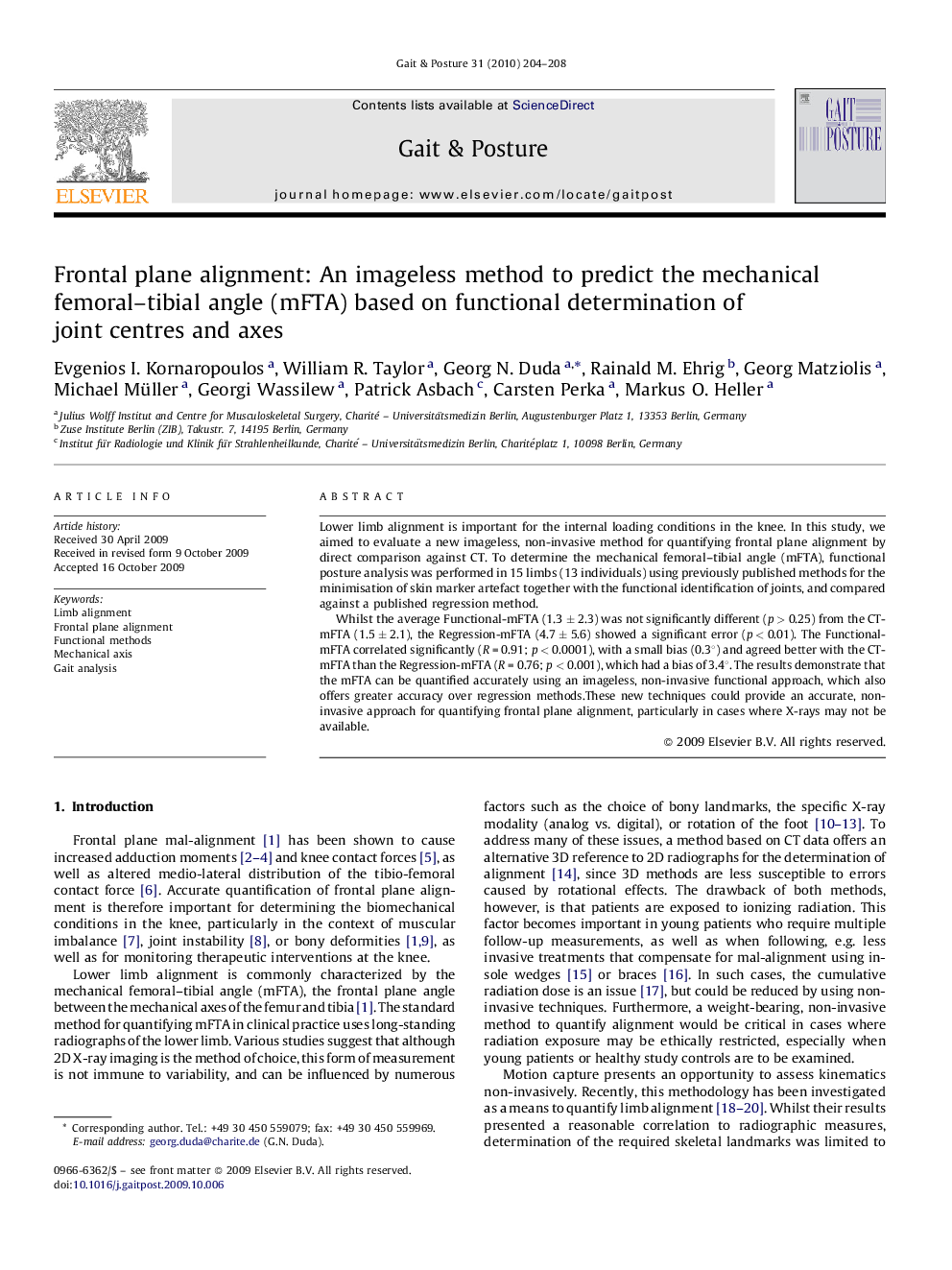| Article ID | Journal | Published Year | Pages | File Type |
|---|---|---|---|---|
| 4057131 | Gait & Posture | 2010 | 5 Pages |
Lower limb alignment is important for the internal loading conditions in the knee. In this study, we aimed to evaluate a new imageless, non-invasive method for quantifying frontal plane alignment by direct comparison against CT. To determine the mechanical femoral–tibial angle (mFTA), functional posture analysis was performed in 15 limbs (13 individuals) using previously published methods for the minimisation of skin marker artefact together with the functional identification of joints, and compared against a published regression method.Whilst the average Functional-mFTA (1.3 ± 2.3) was not significantly different (p > 0.25) from the CT-mFTA (1.5 ± 2.1), the Regression-mFTA (4.7 ± 5.6) showed a significant error (p < 0.01). The Functional-mFTA correlated significantly (R = 0.91; p < 0.0001), with a small bias (0.3°) and agreed better with the CT-mFTA than the Regression-mFTA (R = 0.76; p < 0.001), which had a bias of 3.4°. The results demonstrate that the mFTA can be quantified accurately using an imageless, non-invasive functional approach, which also offers greater accuracy over regression methods.These new techniques could provide an accurate, non-invasive approach for quantifying frontal plane alignment, particularly in cases where X-rays may not be available.
